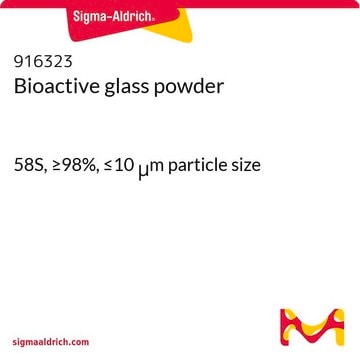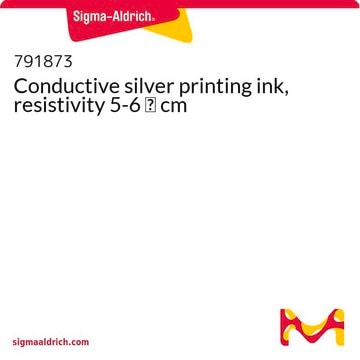推薦產品
應用
Bioactive glass is able to form a hydroxyapatite-like surface layer thus providing a stable bond to bone cells. In addition, bioactive glass has been shown to stimulate bone cells regeneration. Due to its biocompatability and osteogenic capacity applications include tissue engineering, enamel reconstruction, bio-coatings, and high temperature adhesives. Furthermore, S53P4 has displayed antimicrobial activity.
訊號詞
Danger
危險聲明
危險分類
Eye Dam. 1 - Skin Corr. 1B - STOT RE 2 Inhalation - STOT SE 3
標靶器官
Lungs, Respiratory system
儲存類別代碼
8A - Combustible corrosive hazardous materials
水污染物質分類(WGK)
WGK 3
分析證明 (COA)
輸入產品批次/批號來搜索 分析證明 (COA)。在產品’s標籤上找到批次和批號,寫有 ‘Lot’或‘Batch’.。
Lorenzo Drago et al.
Materials (Basel, Switzerland), 11(2) (2018-03-03)
Bone defects caused by trauma or pathological events are major clinical and socioeconomic burdens. Thus, the efforts of regenerative medicine have been focused on the development of non-biodegradable materials resembling bone features. Consequently, the use of bioactive glass as a
Francesco Baino et al.
Journal of functional biomaterials, 9(1) (2018-03-23)
Bioactive glasses caused a revolution in healthcare and paved the way for modern biomaterial-driven regenerative medicine. The first 45S5 glass composition, invented by Larry Hench fifty years ago, was able to bond to living bone and to stimulate osteogenesis through
Julian R Jones
Acta biomaterialia, 9(1), 4457-4486 (2012-08-28)
Bioactive glasses are reported to be able to stimulate more bone regeneration than other bioactive ceramics but they lag behind other bioactive ceramics in terms of commercial success. Bioactive glass has not yet reached its potential but research activity is
我們的科學家團隊在所有研究領域都有豐富的經驗,包括生命科學、材料科學、化學合成、色譜、分析等.
聯絡技術服務










